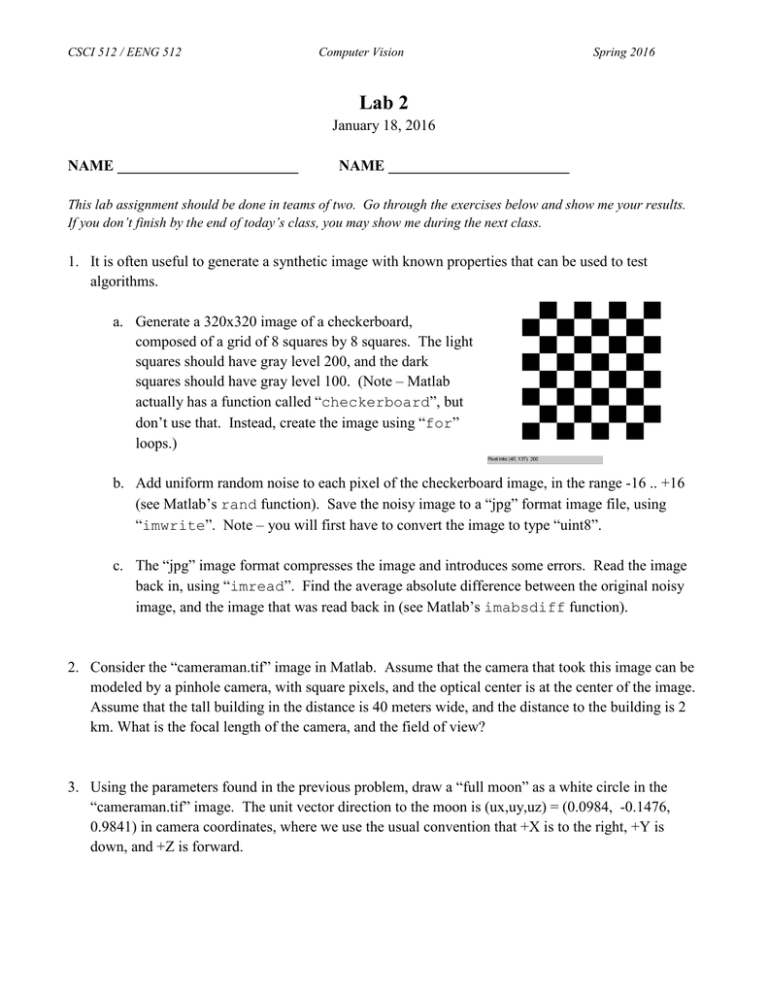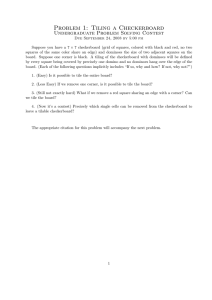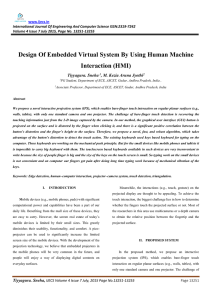Lab 2 January 18, 2016 NAME ________________________
advertisement

CSCI 512 / EENG 512 Computer Vision Spring 2016 Lab 2 January 18, 2016 NAME ________________________ NAME ________________________ This lab assignment should be done in teams of two. Go through the exercises below and show me your results. If you don’t finish by the end of today’s class, you may show me during the next class. 1. It is often useful to generate a synthetic image with known properties that can be used to test algorithms. a. Generate a 320x320 image of a checkerboard, composed of a grid of 8 squares by 8 squares. The light squares should have gray level 200, and the dark squares should have gray level 100. (Note – Matlab actually has a function called “checkerboard”, but don’t use that. Instead, create the image using “for” loops.) b. Add uniform random noise to each pixel of the checkerboard image, in the range -16 .. +16 (see Matlab’s rand function). Save the noisy image to a “jpg” format image file, using “imwrite”. Note – you will first have to convert the image to type “uint8”. c. The “jpg” image format compresses the image and introduces some errors. Read the image back in, using “imread”. Find the average absolute difference between the original noisy image, and the image that was read back in (see Matlab’s imabsdiff function). 2. Consider the “cameraman.tif” image in Matlab. Assume that the camera that took this image can be modeled by a pinhole camera, with square pixels, and the optical center is at the center of the image. Assume that the tall building in the distance is 40 meters wide, and the distance to the building is 2 km. What is the focal length of the camera, and the field of view? 3. Using the parameters found in the previous problem, draw a “full moon” as a white circle in the “cameraman.tif” image. The unit vector direction to the moon is (ux,uy,uz) = (0.0984, -0.1476, 0.9841) in camera coordinates, where we use the usual convention that +X is to the right, +Y is down, and +Z is forward.




